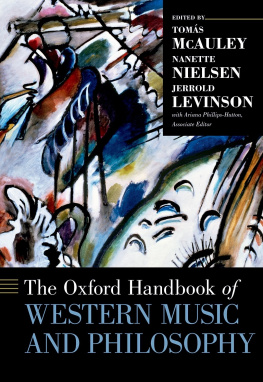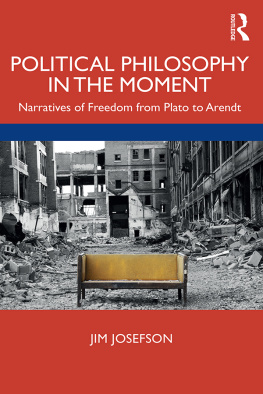Prolegomena to a Carnal
Hermeneutics
Prolegomena to a Carnal
Hermeneutics
Hwa Yol Jung
LEXINGTON BOOKS
Lanham Boulder New York London
Published by Lexington Books
An imprint of The Rowman & Littlefield Publishing Group, Inc.
4501 Forbes Boulevard, Suite 200, Lanham, Maryland 20706
www.rowman.com
16 Carlisle Street, London W1D 3BT, United Kingdom
Copyright 2014 by Lexington Books
Cover image: Pablo Picasso/ Spanish, worked in France, 18811973/ Mother and Child, 1921/ Oil on canvas /56 1/4 x 68 in. (142.9 x 172.7 cm) / Restricted gift of Maymar Corporation, Mrs. Maurice L. Rothschild, and Mr. and Mrs. Chauncey McCormick; Mary and Leigh Block Fund; Ada Turnbull Hertle Endowment; through prior gift of Mr. and Mrs. Edwin E. Hokin / 1954.270 / The Art Institute of Chicago.
All rights reserved. No part of this book may be reproduced in any form or by any electronic or mechanical means, including information storage and retrieval systems, without written permission from the publisher, except by a reviewer who may quote passages in a review.
British Library Cataloguing in Publication Information Available
Library of Congress Cataloging-in-Publication Data
Library of Congress Cataloging-in-Publication Data Available
ISBN 978-0-7391-8580-3 (cloth : alk. paper)
ISBN 978-0-7391-8581-0 (electronic)
 TM The paper used in this publication meets the minimum requirements of American National Standard for Information Sciences Permanence of Paper for Printed Library Materials, ANSI/NISO Z39.48-1992.
TM The paper used in this publication meets the minimum requirements of American National Standard for Information Sciences Permanence of Paper for Printed Library Materials, ANSI/NISO Z39.48-1992.
Printed in the United States of America
Acknowledgments
This book has been written in memory of my mother from whom I inherited the virtue of diligence and perseverance. In addition, I would like to express my deep gratitude to four other persons. First, to my longtime friend Hugh Silverman, unfortunately posthumously, who had been Executive Director of the International Association for Philosophy and Literature for many yearsthe organization that stands for my ideal of transversality, that is, the ideal of intercultural and interdisciplinary approaches. Second, my friend and fellow traveler in carnal phenomenology John ONeill, who has an Irish gift of poetic flair, whetted my appetite especially for Vicos carnal hermeneutics, and has been sharing his interest with me in the incomparable phenomenology of Maurice Merleau-Ponty. Third, Mickey Morales who had been my secretary for more than thirty years and is now my bosom companion, without whose tireless help and care I would not have been so productive. Fourth, my son Michael who designed the cover of the book by using Picassos youthful 1921 painting Mother and Child, which is the icon of this book: In the beginning was tactile socialitythe cradle of all embodied sociality.
My gratitude also goes to Jana Hodges-Kluck, Natalie Mandziuk, and Joe Miller of Lexington Books for their help and patience, and to Robert Swanson and his colleagues for their work on the index. I am also very grateful for my collaborators and mentors (seungsaengnim in Anglocized Korean) whose names are mentioned or not in this book and especially for John and Fred who were willing to pen their pre-publication reviews of my book.
Introduction
Carnal hermeneutics has come of age. The publication of the British journal Body and Society in 1995 celebrates its arrival and certifies its fundamental importance of writing the body as social inter(dis)course. The body is our primordial way of inhabiting and mediating the world both human (Mitwelt) and nonhuman (Umwelt), that is, the parliament of all things. I began to use the expression carnal hermeneutics in my essay entitled Writing the Body as Social Discourse: Prolegomena to Carnal Hermeneutics which was presented at the Sixteenth Annual Meeting of the International Association for Philosophy and Literature at the Universit de Montral in 1991 and later published in its collection of selected essays in 1996. In the spirit of the French carnal feminist Luce Irigaray, it is high time, I suggest, to stop reproducing the same history by speaking the same language.
Postmodern thought is marked by a rainbow coalition of many splendid things; it is a colorful polygraph. And yet carnal hermeneutics is still marginalized on its threshold. The purpose of this essay is to explore the possibility of carnal hermeneutics as postmodern social discourse, incorporated in a phenomenology of the lived body in the backdrop of the cogito principle of Descartes, which became the philosophical/epistemological canon of modernity. Carnal hermeneutics as a postmodern project is introduced in the hopes of transgressing and overcoming, that is, of deconstructing Here the neopragmatist Rorty follows John Dewey in that hearing is participatory, while vision is spectatorial. Rortys hermeneutics continues the task set forth in Heideggers questioning as the piety of thinking [die Frmmigkeit des Denkens], Hans-Georg Gadamers dialogical hermeneutics, and Merleau-Pontys interrogation.
Carnal hermeneutics means to cure the long tradition of Western disembodied misconception of truth, reality, and the world since the time of Platos idealism based on (visual) eidos, which was resurrected in Descartess epistemocracy as prima philosophia in pursuit of clear and distinct ideas in Western modernity. Jacques Attalis following bold and sweeping words are one major tip for carnal hermeneutics today and tomorrow: For twenty-five centuries, Western knowledge has tried to look upon the world. It has failed to understand that the world is not for beholding. It is for hearing. It is not legible, but audible.
In Western modernity, it was the logocentrism of Descartes that put a metaphysical padlock on the body and perpetuated the myth of incorporeal reason. The cogito effect has impoverished and disempowered the body with flesh and bones from the main currents of philosophical discourse. As Catherine Belsey puts it concisely: he [Descartes] was [is] a mind, [whereas] he had a body. By putting Western philosophy on a wrong footing, the epistemological dominance of Descartes cogito has made it astray for centuries even today in the so-called philosophy of the mind.
The castigation and even crucifixion of corpo/reality as an ephemeral and perishable thing (res) has almost always prevailed in the mainstream of Western thoughtGreek as well as Christian thoughtin favor of the incorporeal immortality of the soul. Descartes inherited early Christian asceticism. Origen, the stern Christian ascetic and theologian, depicted corporealitymore specifically, sexualityas a passing phenomenon and hinted at the eschatological hope of purifying the soul from the flesh. He spoke as if the soul lives in the prison-house of the body. Peter Brown, who is known to have influenced Michel Foucault on the carnal matters of classical antiquity, describes Origens hope in an eloquent way: Human life, lived in a body ensued with sexual characteristics, was but the last dark hour of a long night that would vanish with the dawn. The body was poised on the edge of a transformation to enormous as to make all present notions of identity tied to sexual differences, and all social roles based upon marriage, procreation, and childbirth, seem as fragile as dust dancing in a sunbeam.
In this light, carnal hermeneutics means to transgress, subvert, and overcome disembodied Reason in the mainstream modern Western philosophy of the mind with an exclusive focus on epistemology and its methodology. For Descartes, The head [brain] is detached from the body, without its having to be decapitatedto borrow Jean-Luc Nancys apt expression.
Next page
















 TM The paper used in this publication meets the minimum requirements of American National Standard for Information Sciences Permanence of Paper for Printed Library Materials, ANSI/NISO Z39.48-1992.
TM The paper used in this publication meets the minimum requirements of American National Standard for Information Sciences Permanence of Paper for Printed Library Materials, ANSI/NISO Z39.48-1992.